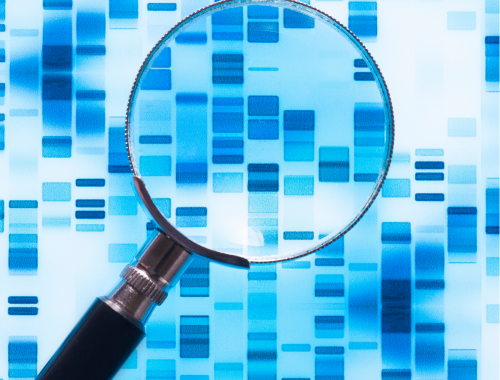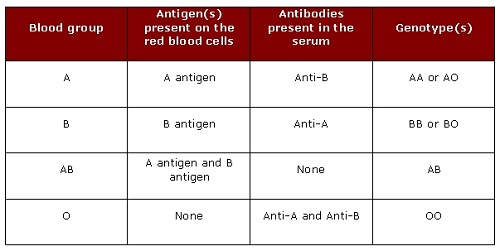
Genotype and phenotype are two fundamental concepts in genetics that together define the intricate relationship between an organism’s genetic makeup and its observable traits. This exploration elucidates the striking similarities between genotype and phenotype, unraveling the genetic tapestry that orchestrates the phenotypic manifestations.

1. Definition and Essence:
- Genotype: The genotype represents the genetic constitution of an organism, encompassing the entirety of its genes, including both expressed and non-expressed alleles.
- Phenotype: In contrast, the phenotype denotes the observable traits or characteristics of an organism, influenced by its genotype as well as environmental factors.
2. Genetic Blueprint:
- Both genotype and phenotype are intertwined elements of an organism’s existence. The genotype serves as the genetic blueprint, encoding the instructions for the development, function, and maintenance of the organism.
- The phenotype is the tangible result of the interplay between genetic information and environmental influences. It reflects the outward expression of the underlying genetic code.
3. Role in Heredity:
- Genotype: It plays a crucial role in heredity, as the transmission of genetic information from one generation to the next is primarily dictated by the genotype.
- Phenotype: While the phenotype itself is not directly inherited, it influences an organism’s interactions with its environment, potentially shaping the phenotypes of subsequent generations.
4. Complexity and Diversity:
- The relationship between genotype and phenotype is intricate and multifaceted. Multiple genes contribute to the determination of a single trait, resulting in the complexity and diversity observed in phenotypic expressions.
- Various genetic interactions, including dominance, recessiveness, and polygenic inheritance, contribute to the nuanced interplay between genotype and phenotype.
5. Environmental Impact:
- Both genotype and phenotype are subject to environmental influences. Environmental factors, such as nutrition, exposure to toxins, and physical conditions, can modify or interact with the genetic information, affecting the observable traits.
- The understanding of genotype-phenotype interactions is crucial in fields like epigenetics, where environmental factors can lead to modifications in gene expression without altering the underlying DNA sequence.
The similarities between genotype and phenotype highlight the intricate dance between genetic information and observable traits, forming the basis of heredity and biological diversity. Understanding this interplay is essential for unraveling the mysteries of genetics and its impact on the living world.
Here’s a comparison table highlighting the key similarities between genotype and phenotype:
| Aspect | Genotype | Phenotype |
| Definition | Genetic constitution of an organism, including all genes and alleles. | Observable traits or characteristics of an organism. |
| Essence | Represents the genetic blueprint and instructions for development. | Reflects the outward expression of genetic information. |
| Role in Heredity | Plays a central role in heredity and genetic transmission to offspring. | While not directly inherited, it influences interactions with the environment. |
| Complexity and Diversity | Involves multiple genes contributing to the determination of traits. | Results in the complexity and diversity observed in observable traits. |
| Environmental Impact | Subject to environmental influences that can modify or interact with genetic information. | Observable traits can be influenced by environmental factors, leading to variations. |
This comparison table provides a succinct overview of the key similarities between genotype and phenotype, emphasizing their interdependence in shaping the characteristics of living organisms.
FAQ: Genotype and Phenotype
Q1: What is the primary distinction between genotype and phenotype?
A1: Genotype refers to the genetic constitution of an organism, encompassing all its genes and alleles. Phenotype, on the other hand, represents the observable traits or characteristics of the organism influenced by its genotype and environmental factors.
Q2: How does genotype play a role in heredity?
A2: Genotype plays a crucial role in heredity by serving as the genetic blueprint passed from one generation to the next. It determines the genetic information inherited by offspring.
Q3: Can the phenotype be directly inherited?
A3: The phenotype itself is not directly inherited. While influenced by the genotype, the phenotype is also shaped by environmental factors, making it a product of the interplay between genetics and surroundings.
Q4: How do environmental factors impact genotype and phenotype?
A4: Environmental factors can modify or interact with the genetic information (genotype), affecting the observable traits (phenotype). This interaction is crucial in understanding variations in traits within populations.
Q5: Is the relationship between genotype and phenotype one-to-one?
A5: No, the relationship is not one-to-one. Multiple genes contribute to the determination of a single trait, and various genetic interactions, including dominance and polygenic inheritance, contribute to the complexity of phenotypic expressions.
Q6: Can the phenotype change over an organism’s lifetime?
A6: Yes, the phenotype can change over an organism’s lifetime due to factors such as aging, environmental influences, and gene expression modifications. This highlights the dynamic nature of observable traits.
Q7: How do geneticists study the relationship between genotype and phenotype?
A7: Geneticists use various methods, including genome-wide association studies (GWAS) and molecular biology techniques, to study the relationship between genotype and phenotype. These approaches help identify genetic variations associated with specific traits.
Q8: Are there specific examples of environmental factors influencing phenotypes?
A8: Yes, examples include nutrition affecting growth and development, exposure to environmental toxins influencing health, and temperature affecting coloration in certain animals. These illustrate the impact of environmental factors on observable traits.
Q9: Can changes in the environment lead to variations in genotype?
A9: Changes in the environment generally do not alter the actual genetic code (genotype) of an organism. However, environmental factors can influence gene expression patterns, leading to variations in the observable traits (phenotype).
Q10: Are all observable traits solely determined by genetics?
A10: No, observable traits result from the interplay between genetics and environmental influences. While genetics provides the foundation, environmental factors play a significant role in shaping the phenotype.
Q11: How does genetic diversity contribute to variations in phenotypes within a population?
A11: Genetic diversity, arising from variations in individuals’ genotypes, contributes to the range of phenotypes observed within a population. This diversity is essential for adaptation and survival in changing environments.
Q12: Can identical genotypes result in different phenotypes?
A12: Yes, identical genotypes can lead to different phenotypes due to factors like epigenetics, where modifications in gene expression occur without changes in the underlying DNA sequence.
Q13: Are there specific genetic disorders illustrating the genotype-phenotype relationship?
A13: Yes, conditions like sickle cell anemia or cystic fibrosis exemplify how specific genetic mutations (genotype) can manifest as distinct clinical features (phenotype). Understanding these relationships aids in genetic disease research and treatment.
Q14: How does the study of genotype and phenotype contribute to personalized medicine?
A14: Understanding an individual’s genotype allows for personalized medicine approaches, tailoring treatments based on genetic factors. This precision medicine approach aims to enhance treatment effectiveness and reduce side effects.
Q15: Can environmental changes impact the expression of specific genes in the genotype?
A15: Yes, environmental changes can influence gene expression in the genotype through epigenetic modifications. These modifications can lead to alterations in how genes are turned on or off, impacting the phenotype.










Leave a Reply